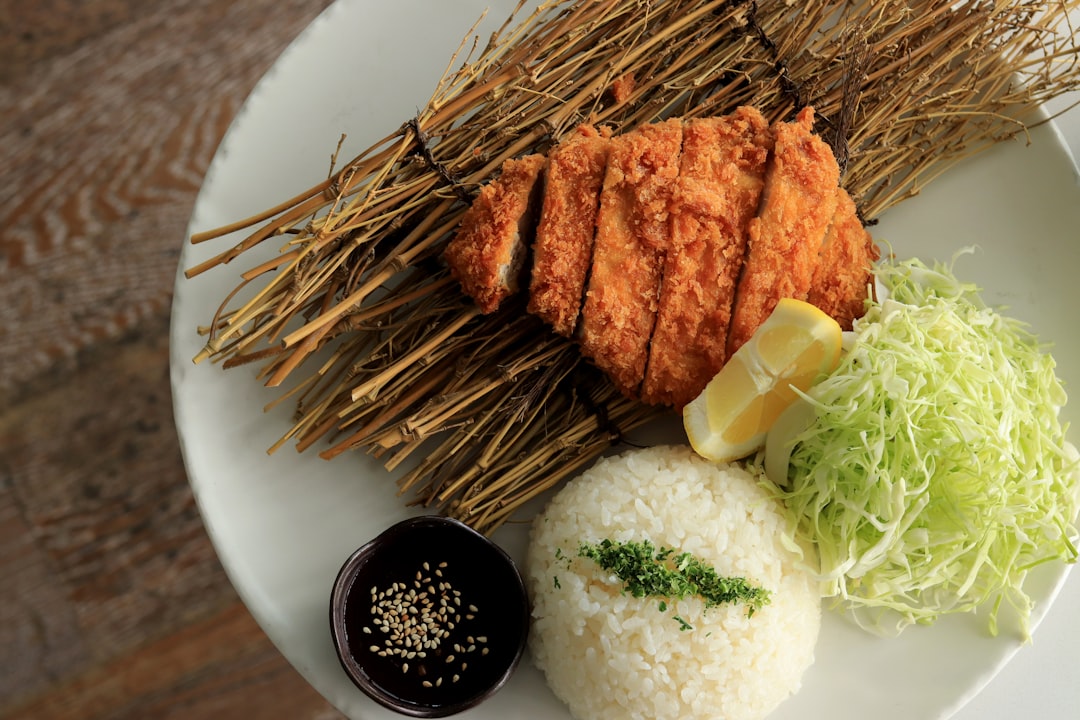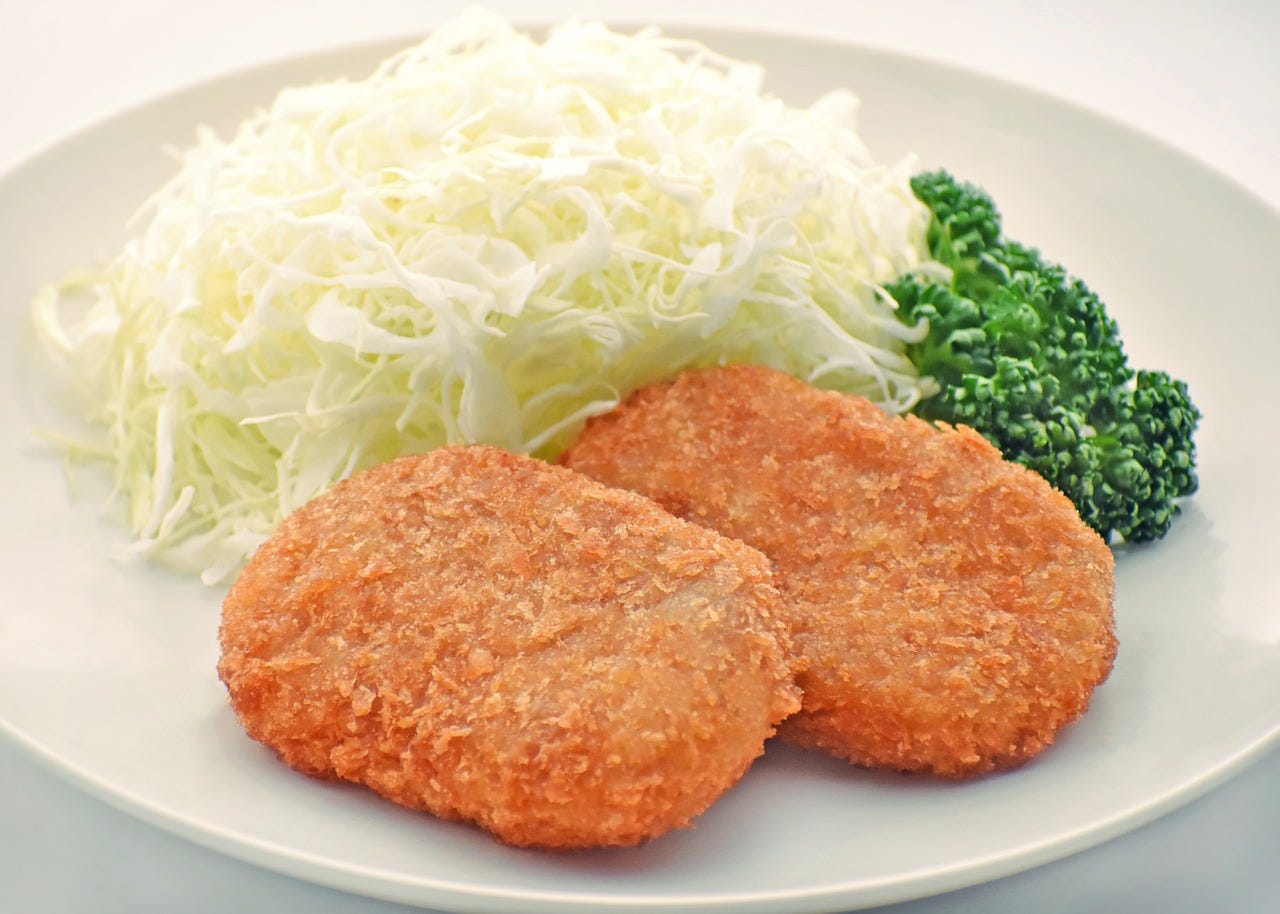Last post we spoke on the evolution of the classic central Europe schnitzel becoming a Japanese Katsu. Yet this was merely the first among many foods during the Meiji Period that crossed the seas and took on a Japanese persona.
The deep fried parade of European cuisine doesn’t just end with a Germanic chunk of meat; every country likes to fry. The English fry, the Dutch fry, but most of all, the French fry. The French had created the croquette and everyone was going to hear about it.
History of the Croquette
If you read the earlier Katsu post, you’ll remember that panko was invented as a substitute for otherwise-expensive imported breadcrumbs. While Katsu was an increasingly popular meal, panko makers knew that they couldn’t just rely on one dish to support their whole industry. Luckily, there soon was another recipient of the panko revolution: the croquette.
Given the French influence, how should you pronounce croquette? In Japan it’s easy: spelled out it is korokke, or Ko Ro Ke.
Imported from France during the Meiji Period (1968-1912), the cheesy French dish was embraced by Japanese eaters. Yet Japan faced a new problem when the population demanded more—there wasn’t enough dairy! The only thing that restaurants could think of that would be dairy adjacent was processed potatoes. Even this modified potato recipe was apparently still reserved for the rich as late as 1887, as apparently the technology was beyond the grasp of the working class.
Once the working class got their hands on korokke, it became an unmitigated success. The deep fried shell can hide fillings of any sort, from the classic processed potato, to the decadent crab cream korokke (Kanikorokke クリーム蟹コロッケ). This has meant the dish could also cater to Japanese vegetarians, an increasingly common customer base. Like any vegetarian-friendly dish, korokke can of course be enjoyed without meat, but perhaps even more important is that the meal never reveals to others the contents of its fillings. It’s truly the great equaliser of foods; rich or poor, you never know what’s hidden inside the korokke shell.
We’re not katsu
If you have been keeping up to date with the latest in deep fried Japanese foods, you may be thinking this sounds awfully similar to the menchi katsu. It seems after a certain point, all deep fried meat and potato dishes begin to converge much like the evolution of animals into crabs. Just like the crab, the deep fried meat morsel is a higher form of being, and all food leads there. Those who are strict about the distinction will point out that croquettes apportion a greater amount of potatoes to the meat fillings, while menchi katsu is essentially a deep fried meatball.
Unlike katsu before it, korokke has morphed into an entree before the main course. This has meant it has kept its humble roots as a potato-based dish, and is most typically found in the takeaway aisles of the local supermarket, ready to eat. However, not all korokke are made the same…
This time there is no long list of recommended korokke. Quality korokke can be found in almost every neighbourhood, but I want to discuss one that goes above and beyond.
High End Croquettes
Kobekitano Asahiya Meat Shop
Address: 3 Chome-17-1 Nakayamatedori, Chuo Ward, Kobe, Hyogo 650-0004, Japan
Japanese chefs could not resist turning even the humble croquette into a luxury item. In this case however, the luxury croquette is not priced as a luxury item. Instead, the famous Kobe croquette costs less to buy than the raw ingredients cost to make. Known as the Extreme Korokke, for each one sold, the shop loses about 250 Yen.
Is this a sustainable business model?
While technology companies are famous for giving away their services at a below cost rate to achieve rapid growth, this is the story of a simple butcher. Admittedly, with multiple stores they might be still pursuing the growth strategy right?
They have two stores.
Naturally there are major waits in order to get these prized items. When the promotion started in the 2000’s, people began waiting for hours. In keeping with the times, the shop began offering delivery of the Extreme Korokke. This has turned into decades, with the current delivery waitlist reaching thirty years. The secret is to wait in line at the store as in-store patrons have priority.
So why do this?
According to the owner, “We made affordable and tasty croquettes that demonstrate the concept of our shop as a strategy to have customers enjoy the croquettes and then hope that they would buy our Kobe beef after the first try.” The owner has even upped production, to provide a chance for all people to experience the flavours of Kobe. A classic case of regional pride, with the butcher only selling produce from from Hyogo Prefecture.
If you are planning on joining the delivery queue, make sure you have a Japanese address. They only sell domestically.
But aside from these guys, the korokke really is food for the ordinary people. It has survived the ups and downs of culinary Japan and kept up with the fashionable palates of the Japanese people. No matter what changes happen in Japanese cuisine (and even changes done to the korokke), the classic potato dish will live on as a favourite.






Fun fact: I think I have eaten more korokke in my time in Japan (11 years now) than croquettes in my time in France (30 years, including the first 25) :-)
Croquettes rock!